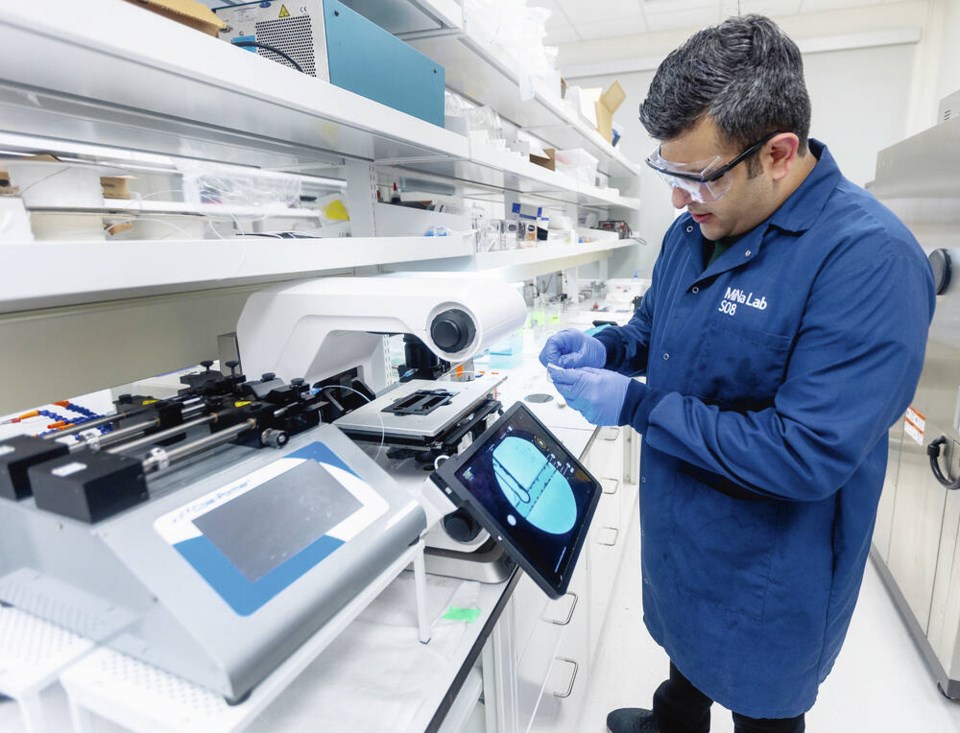It started with a coffee maker.
Scientists at the University of Victoria’s MiNa lab, a research team that studies the behaviour of fluids, wanted to know if their coffee maker was leaching plastic into their morning brew.
After running tests on the coffee, they determined it did, in fact, come with a side of microplastics.
“As soon as we found it, we realized the presence of microplastics would be more extended in our daily life,” said Abbas Motalebizadeh, a PhD candidate at UVic and administrator of the MiNa lab in the mechanical engineering department.
That led them to another question: What can we do to help people become more aware of their microplastics consumption?
The team set out to develop an affordable and portable device to test for the presence of microplastics in liquids, with the goal of creating something that can be easily used by anyone at home.
Samples of a liquid are dropped onto a test, where it mixes with gold nanoparticles, which appear red. The clearer the liquid after mixing with the reagent, the higher the concentration of microplastics.
People will also be able to quantify the amount of microplastics using an app, Motalebizadeh said.
Tests to detect the presence of microplastics already exist, but the large devices are confined to labs, he said. The team is developing a test that fits in the palm of your hand and could cost as little as a few dollars.
Microplastics have been found in human blood, which means it has passed through organs, Motalebizadeh said.
“It’s become a research area because scientists and researchers and doctors have found it in the human body, but we’re not exactly sure what that means yet for human health,” said Emily Earl, MiNa lab operations manager.
Motalebizadeh said the team has detected microplastics in bottled water and tap water. He hopes that enabling people to determine their intake will help them make choices to lower their consumption of microplastics.
“To the best of our knowledge, we think that any physical contact with plastic products can leach microplastics. For example, even when you have a plastic container of your food and you want to have your lunch and try to chop it with your spoon, it can leach microplastics,” he said.
A prototype is expected to be ready next spring. Motalebizadeh isn’t sure when the device will be ready for the market, because it could require approvals by government agencies.
Replacing plastic containers with glass or metal alternatives can help, he said.
>>> To comment on this article, write a letter to the editor: [email protected]



